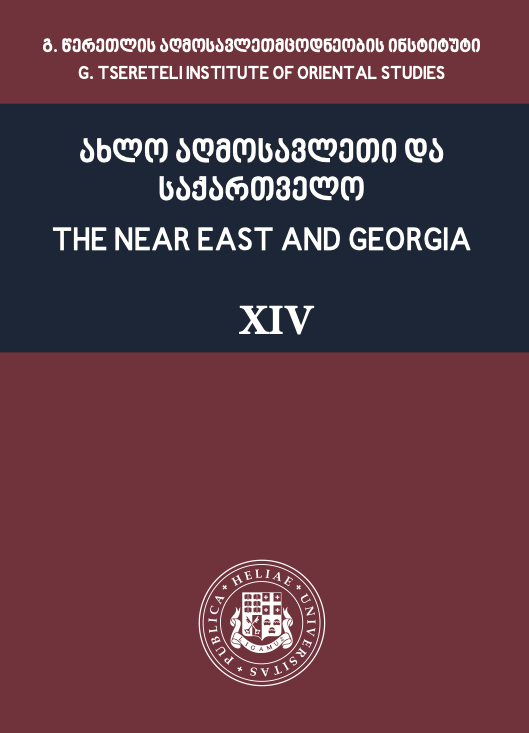GEORGIANS IN SAFAVID IRAN: ABOUT SOME PERSIAN AND ARABIC INSCRIPTIONS OF THE SEVENTEENTH CENTURY RELATED TO THE REPRESETATIVES OF THE UNDILADZE FAMILY
DOI:
https://doi.org/10.32859/neg/14/317-358Keywords:
Safavid Iran, Undliladzes, Mashhad, Golpayegan, HormuzAbstract
The paper discusses a number of Persian and Arabic inscriptions related to Allahverdi Khan (d. 1613) and his eldest son and successor Imamquli Khan (d. 1632), the most famous and influential representatives of the Undiladze family of Georgian gholams, who occupied key positions and played an important role in the military-political and administrative arena of Safavid Iran during the reign of Shah ‘Abbas I (r. 1587-1629). Reference is, in particular, to the following epigraphic materials from the first quarter of the seventeenth century:
- Arabic and Persian inscriptions (dated 1021 and 1022 AH) from the domed mausoleum of Allahverdi Khan in Mashhad;
- Arabic inscription (dated 1031 AH) on the north exterior entrance portal of the Jame‘-e ‘Atiq Mosque of Shiraz;
- Persian and Arabic inscriptions (dated 1032 and 1033 AH) from the Imamzadegan-e Hefdah-Tan in Golpayegan;
- Persian inscriptions on Portuguese cannons taken as spoils of war by the Iranians under the command of Imamquli Khan during the capture of Hormuz in 1622.
These inscriptions provide quite valuable additional material for the study of various aspects of the history of the Undiladze family.
The authors are most grateful to Prof. Naufomi Abe (University of Tokyo, Japan), Prof Jose Francisco Cutillas Ferrer (University of Alicante, Spain), Prof. May Farhat (Holy Spirit University of Kaslik, Lebanon), and Dr. Maka Natadze (Embassy of Georgia in the Islamic Republic of Iran), for their generous help with some of the references.




